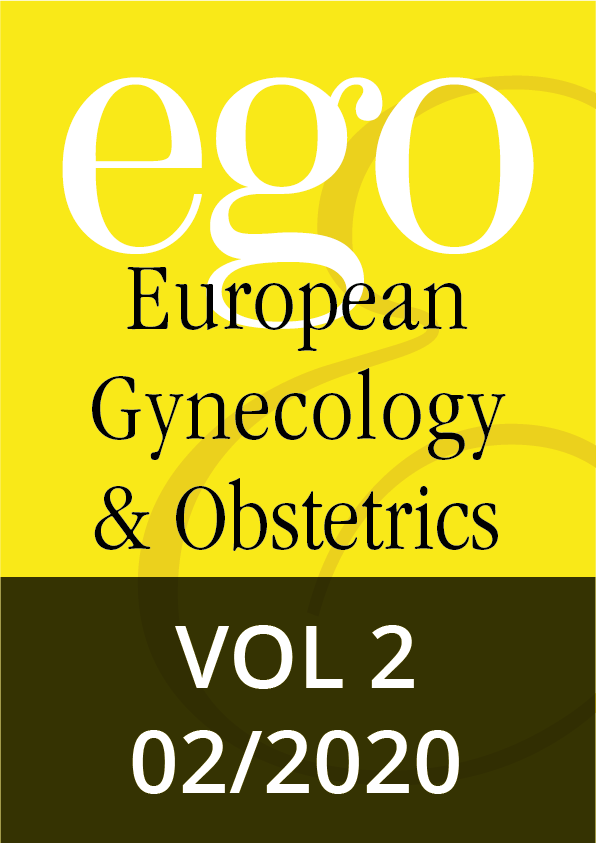Editorial, 03-04 | DOI: 10.53260/EGO.202011
Editorial, 071–072 | DOI: 10.53260/EGO.202021
Short reviews, 073–076 | DOI: 10.53260/EGO.202022
Short reviews, 077–081 | DOI: 10.53260/EGO.202023
Short reviews, 082–089 | DOI: 10.53260/EGO.202024
Short reviews, 090–093 | DOI: 10.53260/EGO.202025
Case reports, 094–097 | DOI: 10.53260/EGO.202026
Case reports, 098–100 | DOI: 10.53260/EGO.202027
Short reviews, 10-15 | DOI: 10.53260/EGO.202013
Case reports, 101–104 | DOI: 10.53260/EGO.202028
Original articles, 105–110 | DOI: 10.53260/EGO.202029
Original articles, 111–115 | DOI: 10.53260/EGO.2020210
Original articles, 116–122 | DOI: 10.53260/EGO.2020211
Original articles, 123–126 | DOI: 10.53260/EGO.2020212
Original articles, 127–131 | DOI: 10.53260/EGO.2020213
Hormonal treatment of endometriosis in adolescents and young adults: consequences on bone density
Abstract
Endometriosis is a chronic disorder characterized by the finding of “endometrium-like” tissue and glands outside the uterus. It is the leading cause of secondary dysmenorrhea in adolescents. Endometriosis is mainly an estrogen-dependent disorder, therefore current hormonal therapies aim to counteract the biological effect of estrogens, reducing cell proliferation, neuroinflammation and pain In adolescents and young adults, in particular, treatment aims to reduce pain, prevent the development of endometrial implants, and preserve fertility.
Estrogens are main regulators of bone physiology, and hormonal therapies may therefore affect bone remodeling, both during adolescence and aging. Peak bone mineral accrual may be a concern in patients receiving long-term, low-estrogen hormonal treatment, such as for endometriosis. Here, we review crucial estrogen-related mechanisms associated with bone remodeling in adolescents and young adults and their potential role in long-term hormonal treatment of endometriosis. Early diagnosis of endometriosis is crucial, but early hormonal administration may expose young patients to bone fragility later in life.
Keywords: adolescents, endometriosis, hormones.
Citation: Guedj N.,Yaron M.,Pluchino N., Hormonal treatment of endometriosis in adolescents and young adults: consequences on bone density, EGO European Gynecology and Obstetrics (2020); 2020/02:077–081 doi: 10.53260/EGO.202023
Published: April 1, 2020
ISSUE 2020/02

Editorial, 03-04 | DOI: 10.53260/EGO.202011
Editorial, 071–072 | DOI: 10.53260/EGO.202021
Short reviews, 073–076 | DOI: 10.53260/EGO.202022
Short reviews, 077–081 | DOI: 10.53260/EGO.202023
Short reviews, 082–089 | DOI: 10.53260/EGO.202024
Short reviews, 090–093 | DOI: 10.53260/EGO.202025
Case reports, 094–097 | DOI: 10.53260/EGO.202026
Case reports, 098–100 | DOI: 10.53260/EGO.202027
Short reviews, 10-15 | DOI: 10.53260/EGO.202013
Case reports, 101–104 | DOI: 10.53260/EGO.202028
Original articles, 105–110 | DOI: 10.53260/EGO.202029
Original articles, 111–115 | DOI: 10.53260/EGO.2020210
Original articles, 116–122 | DOI: 10.53260/EGO.2020211
Original articles, 123–126 | DOI: 10.53260/EGO.2020212
Original articles, 127–131 | DOI: 10.53260/EGO.2020213
